SPECIAL
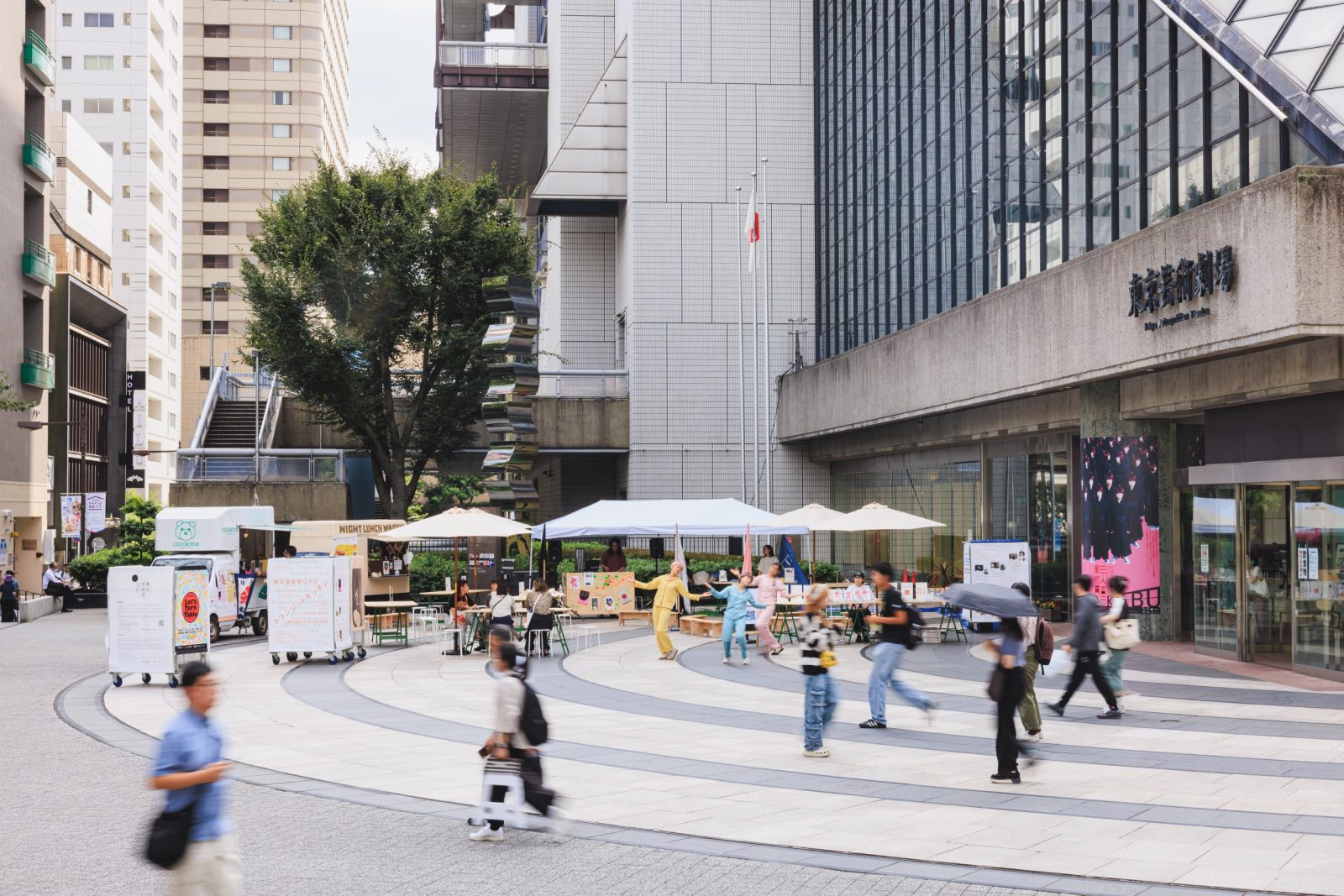
Tokyo Festival Information Center – HIROBA 【TRANSIT KITCHEN】Event Report “Outdoor information center to familiarize yourself with the expression between the world of the everyday and the world of the stage”
Tokyo Festival Information Center - HIROBA 【TRANSIT KITCHEN】 (hereinafter referred to as ‘Kitchen’) was newly held this year as an information space for the Tokyo Festival.
It was held for approximately 10 days from Thursday, September 19, to Sunday, September 29, 2024, at Tokyo Metropolitan Theatre(Front entrance of the theatre), attracting a total of 4,652 visitors.
The Kitchen is an open-air information center where people can enjoy themselves in their own ways, as if in transit between everyday life and the stage/expression. The Kitchen was established with the aim of creating a place where visitors to the Tokyo Festival, as well as those unfamiliar with the theater, performers, production and management staff, and various other visitors, can talk about the theater and culture.
In this article, staff member Isono presents a record of the kitchen as it unfolded day after day.
(Text: Rena Isono, Photos: Tatsuhiko Nakagawa, Editing: Satsuki Imai)
Outdoor information center where you can know about the Tokyo Festival.
First, let me give you a general overview!
The kitchen is located in the Tokyo Metropolitan Theatre (front entrance of the theatre), just outside the main entrance of the Tokyo Metropolitan Theatre. There, tables and benches are set up, and three flags are waving.
In addition, two kitchen cars are lined up around the tables, creating a fun atmosphere with people eating, talking, and listening to the DJ's music.

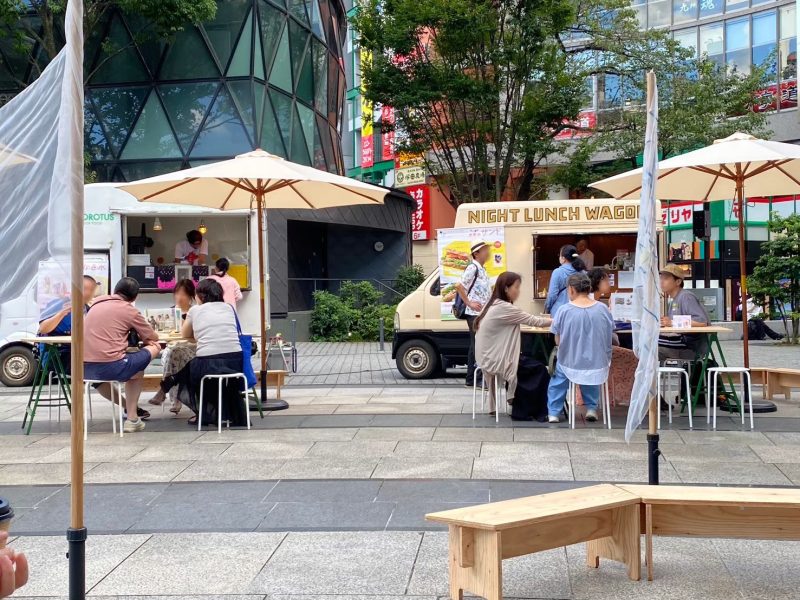
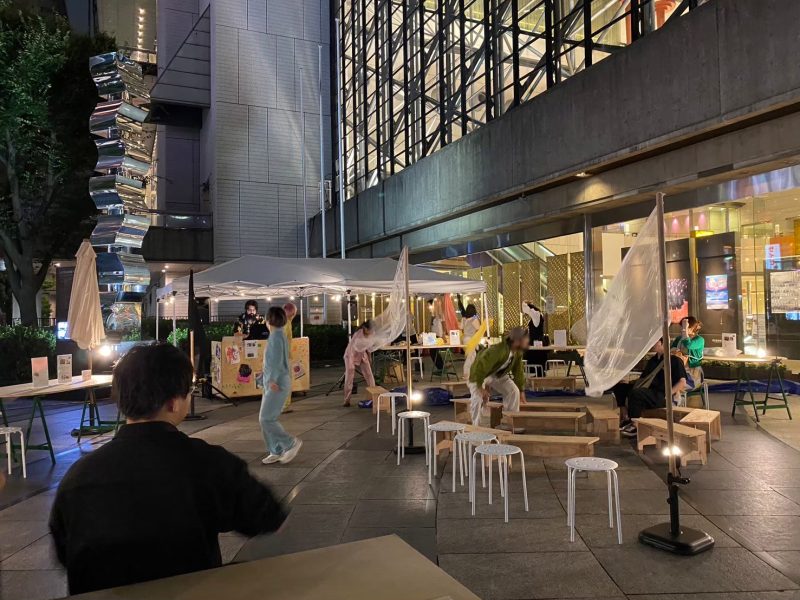
An information desk is set up at the main entrance to the kitchen. Here, visitors can browse through pamphlets and flyers for each performance of the Tokyo Festival and ask questions to the staff about programs.
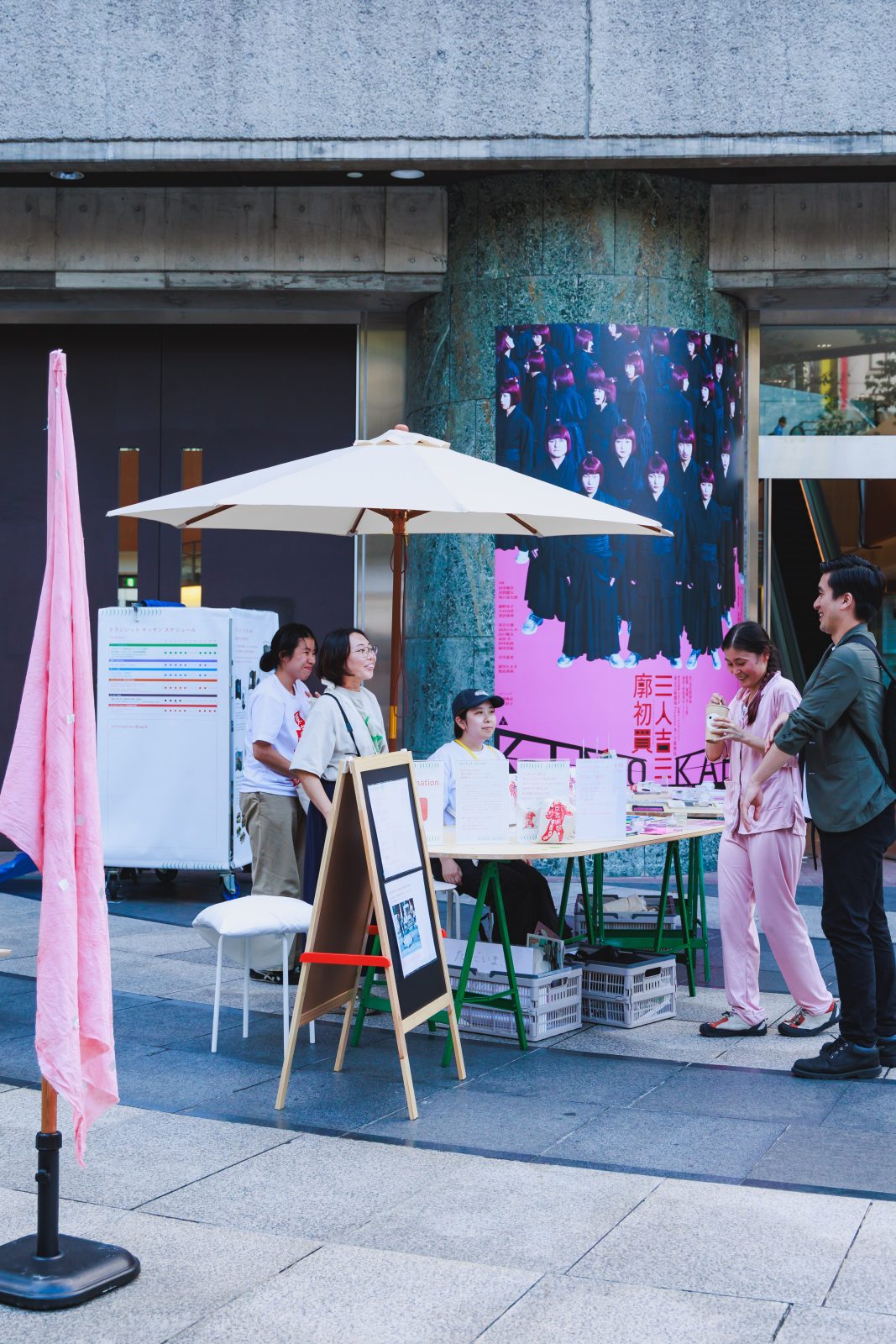
The kitchen became a touchpoint to the world of the performing arts for people before and after a theater viewing, as well as for those who happened to pass by.
Also, it was created as a space that people spend time in comfortably, so it was organically changed in the space depending on the weather of the day and the presence of related events.
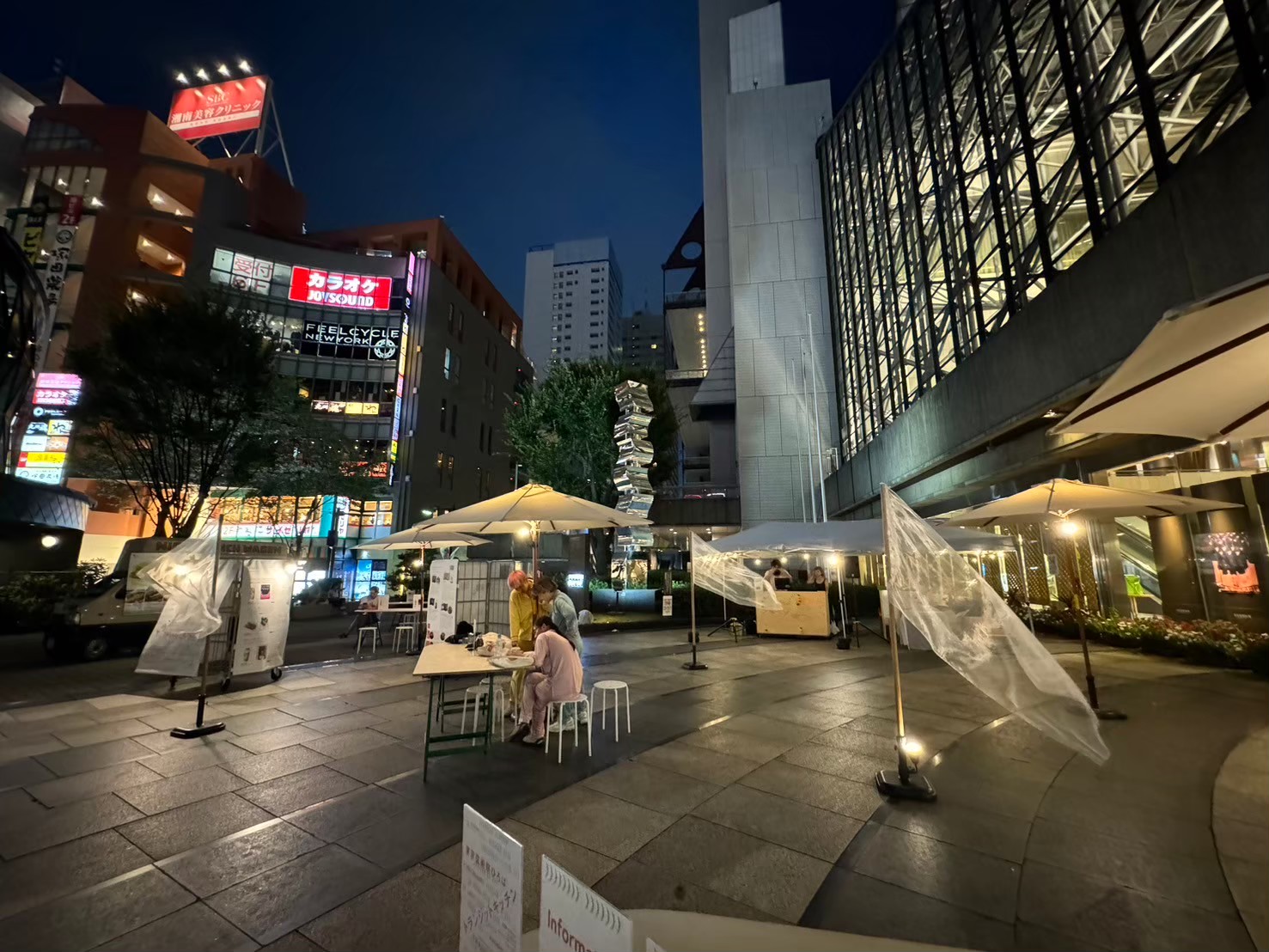
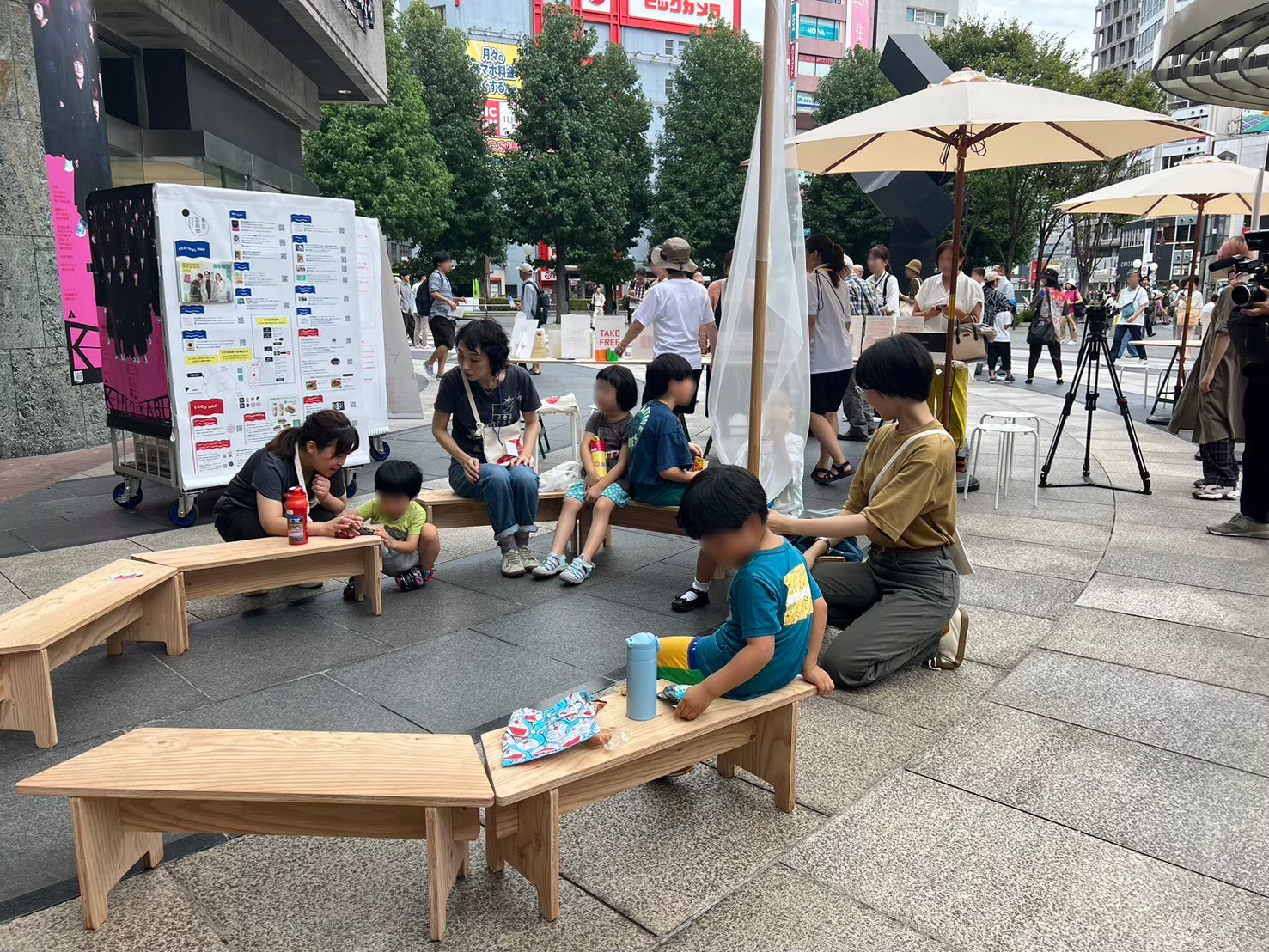
The entire space was characterized by food, music, art, and performances inspired by each performance, which can be experienced and appreciated and was dotted with expressions that helped visitors experience and become interested in a part of the performing arts world.
Let's take a look at each of these expressions!
Collaboration food
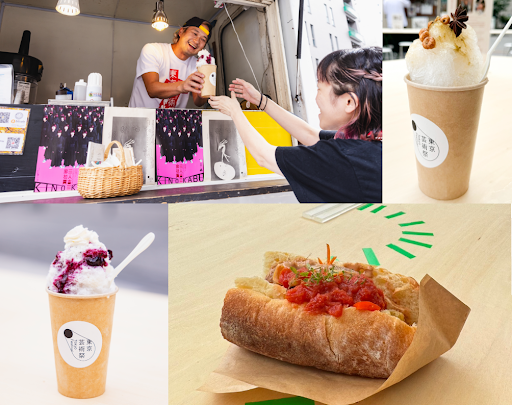
In the Kitchen, The COCOROTUS's food truck served food every day.
There were three kinds of collaborative foods inspired by the Art Festival programs that were created by Ayumi Miyagawa, who is in charge of food, and baguette sandwiches, which were arranged for the Art Festival from dishes from around the world sold by COCOROTUS.
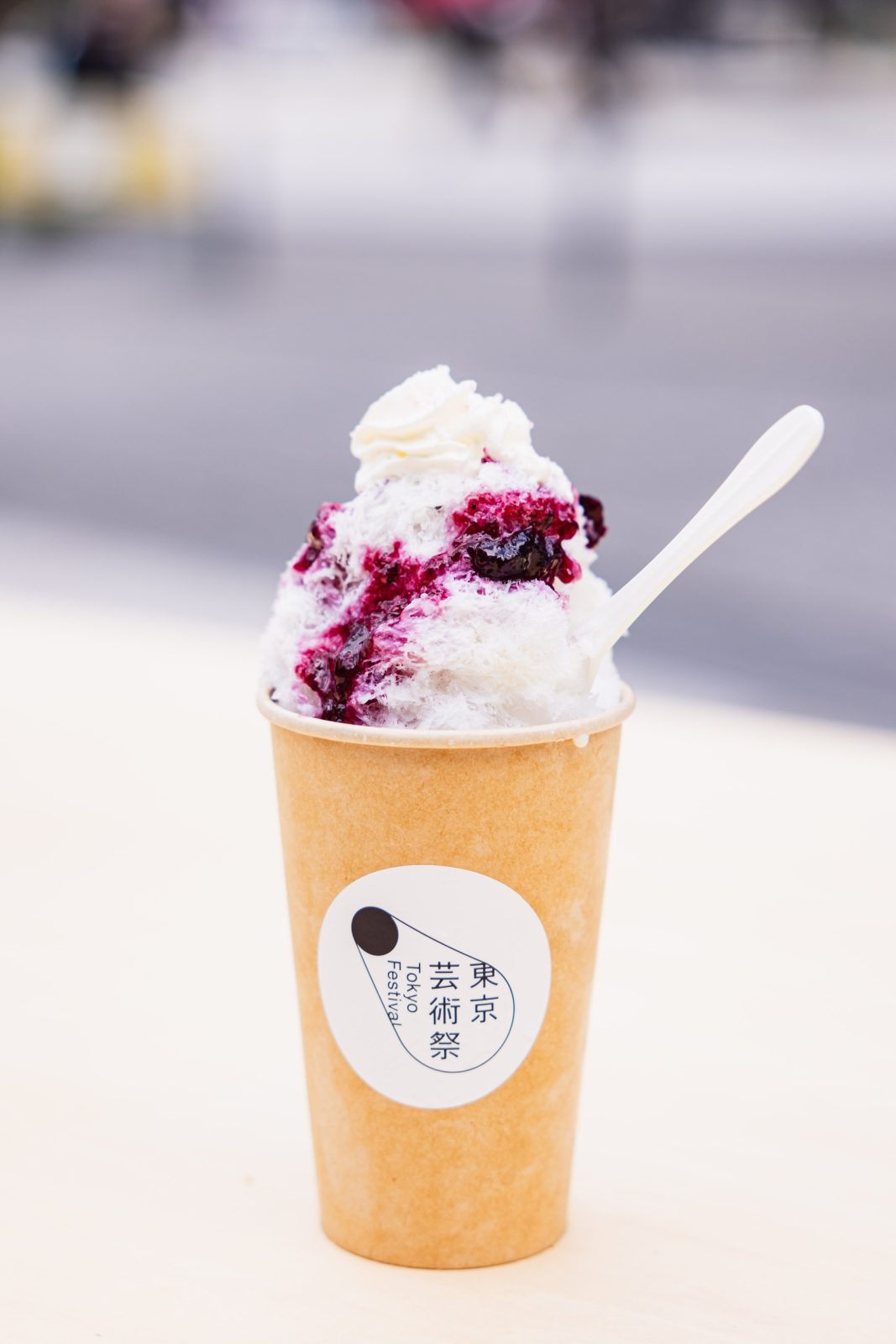
The first collaboration menu item is “Plum-purple romance." This shaved ice is a collaboration with Tokyo Metropolitan Theater Presents Kinoshita Kabuki's production of “Sannin Kichisa Kuruwa no Hatsugai”.
This shaved ice had a gorgeous flavor that harmonizes the acidity of the sauce made from strawberries, raspberries, and blueberries, which recalls the bright pink color of the flyer of the performance, the sweetness of the base milk sauce, and the saltiness of the additive-free and colorless salt plum.
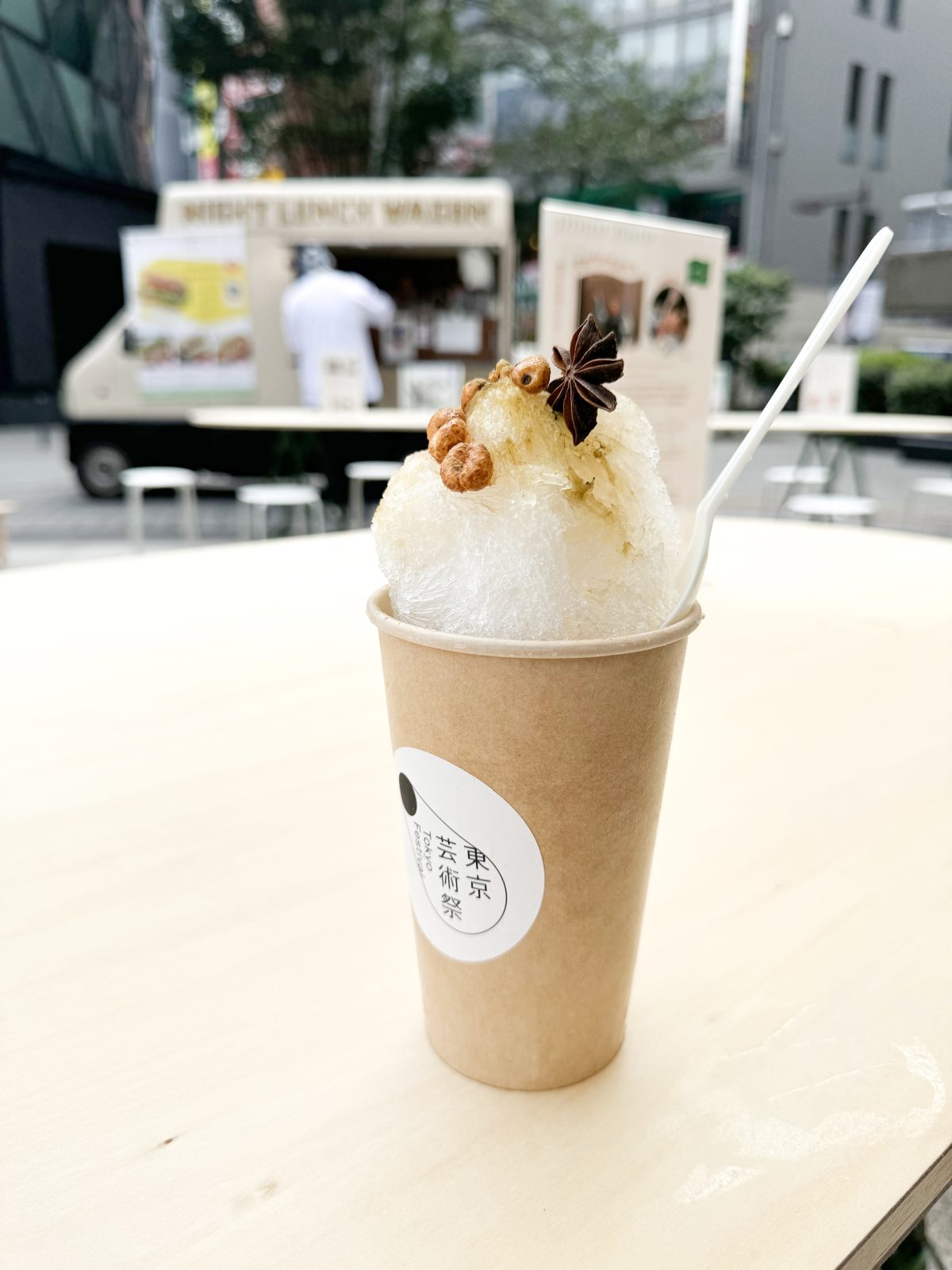
The second is “Ivory Dream. This shaved ice is a collaboration with “Virtual Disorder” a work by NORUHA, and expresses “the way a modern work is created based on two classical works” with traditional ingredients such as molasses, hojicha powder, and wasanbon (Japanese three-bean cake).
The homemade ginger spice syrup and molasses base were rich in flavor, and the top was decorated with barley pong pastry and fragrant octagonal horns. People could find a flavor in the newness of the old taste.
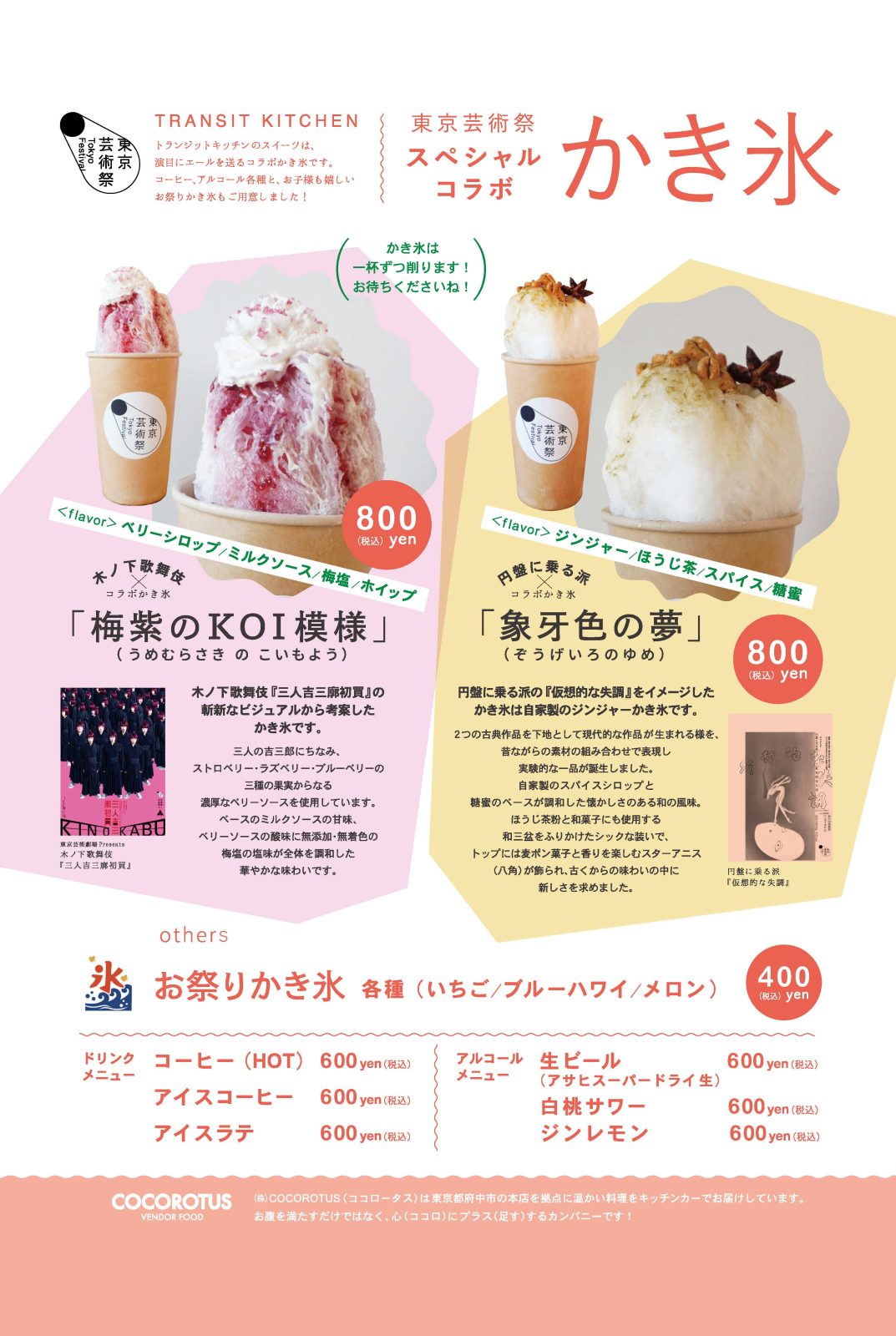
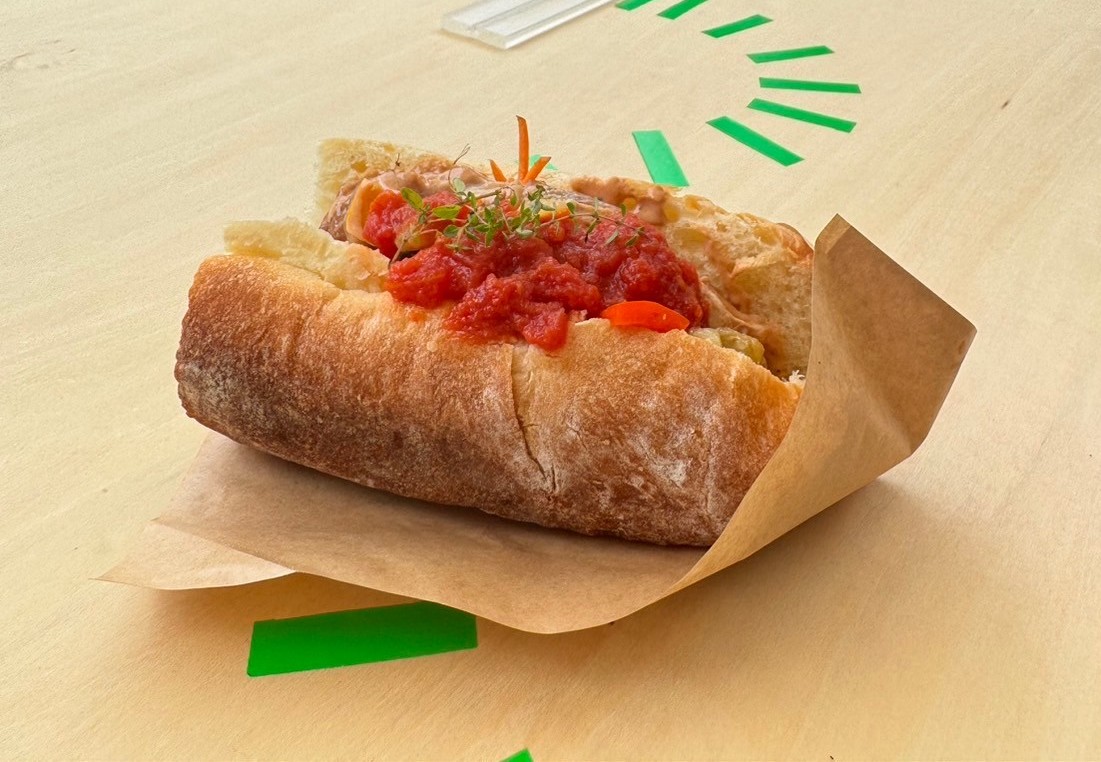
The third is the Grilled Chicken x Marinated Summer Vegetables Sandwich. This baguette sandwich is a collaboration with “Metamorphosis of a Living Room,” a work by chelfitsch & Dai Fujikura with Ensemble Nomad. The key word of this performance, “fusion” theater and music, is used to create a voluptuous sandwich that echoes the flavors of grilled chicken and herb-seasoned grilled chicken.
Visitors could be seen eating the food before and after the theater viewing along with the world of the stage, enjoying the collaborative food as part of the process of the viewing experience.
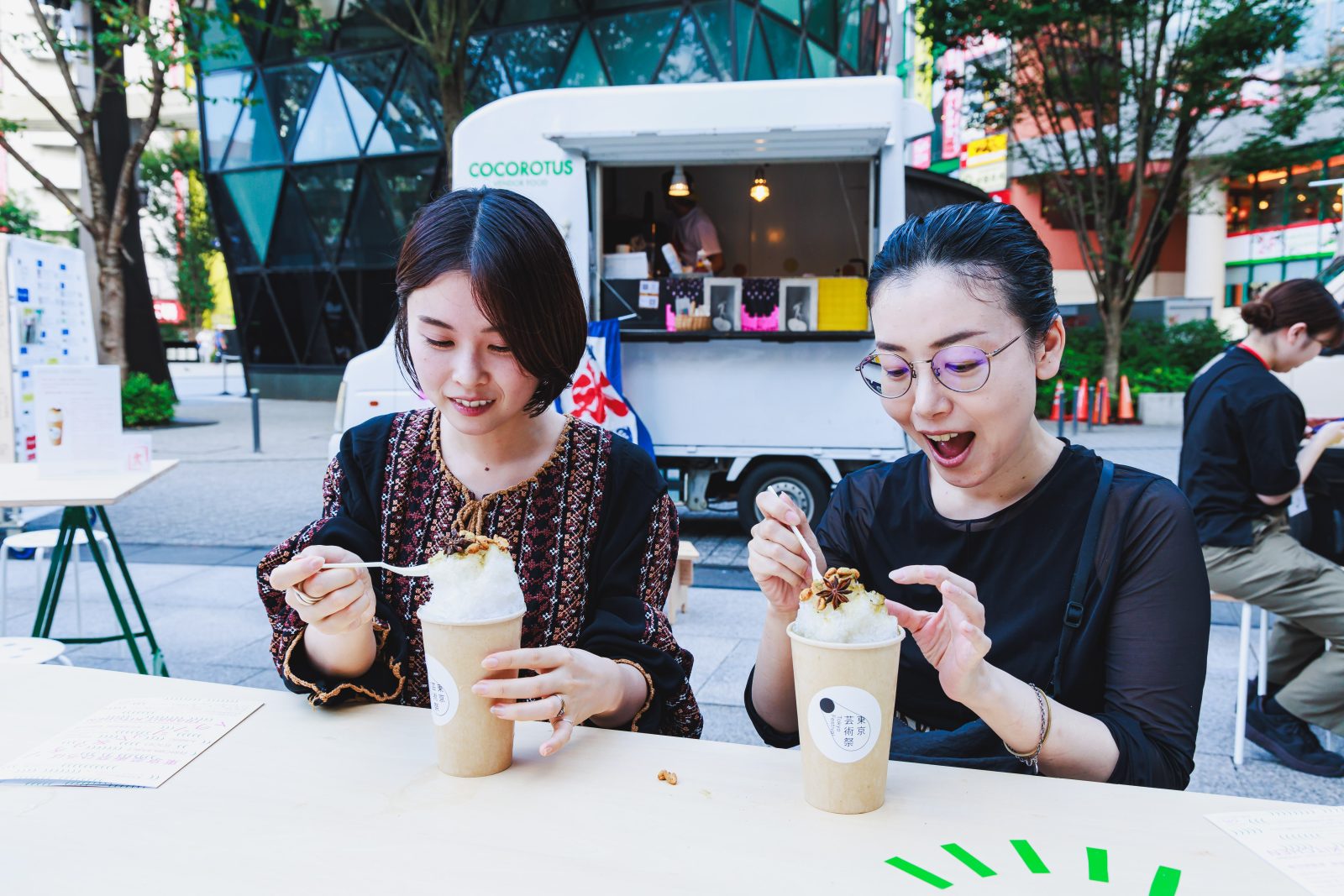
People enjoyed beyond the space, the kitchen!
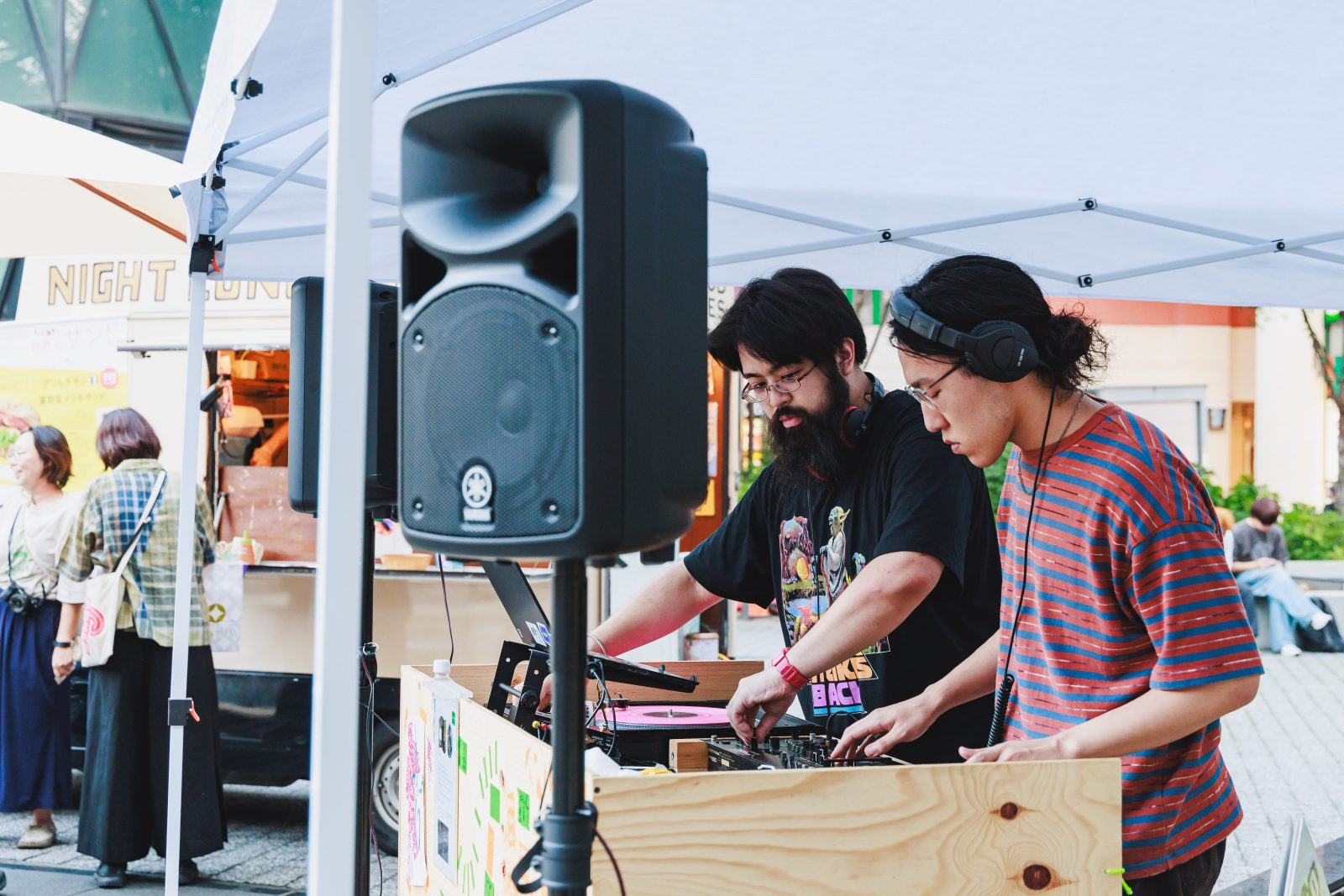
The music for the event was provided by artist and DJ Tommo.
The DJ performed a selection of music influenced by the program of the Art Festival.
The music selection responded to the time of day and weather conditions at the venue, creating a world view unique to Tommo.
The music reached beyond the space of the venue to the people passing through town. They stopped around the venue, and some even walked to the rhythm of the music.
On one evening, a child of a visitor started dancing after hearing the DJ's music, and the people who were there joined in with him. There seemed to be a space in the kitchen where everyone could participate.

Artwork that can change the view of the kitchen from day to day.
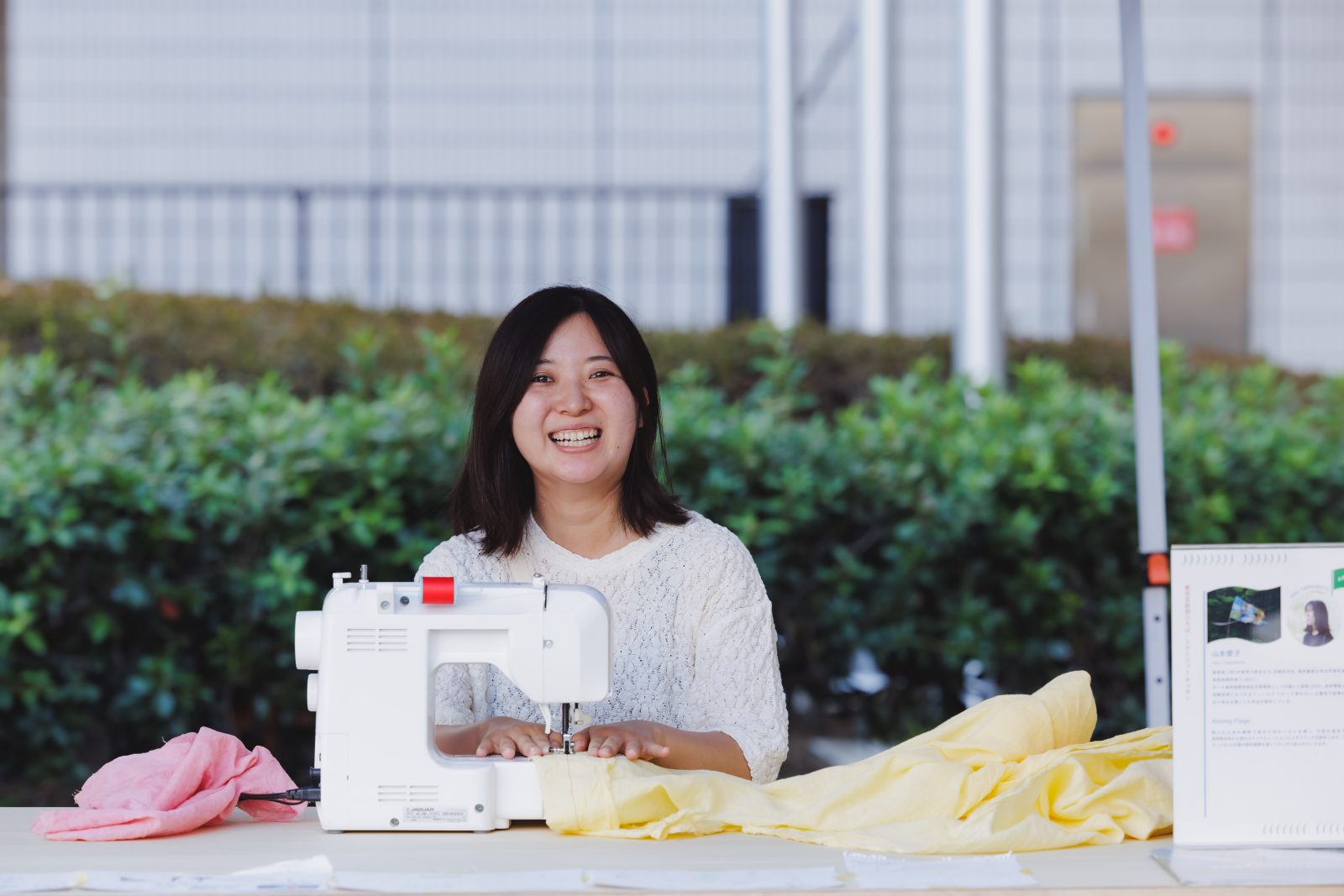
The artwork in the kitchen was created by Aiko Yamamoto, an artist who uses dyeing techniques to create her artwork. She sewed together fabrics that she had dyed and created a flag with the image of the Art Festival program. The work changed day by day through repeated viewing of the program and the creation of artwork.
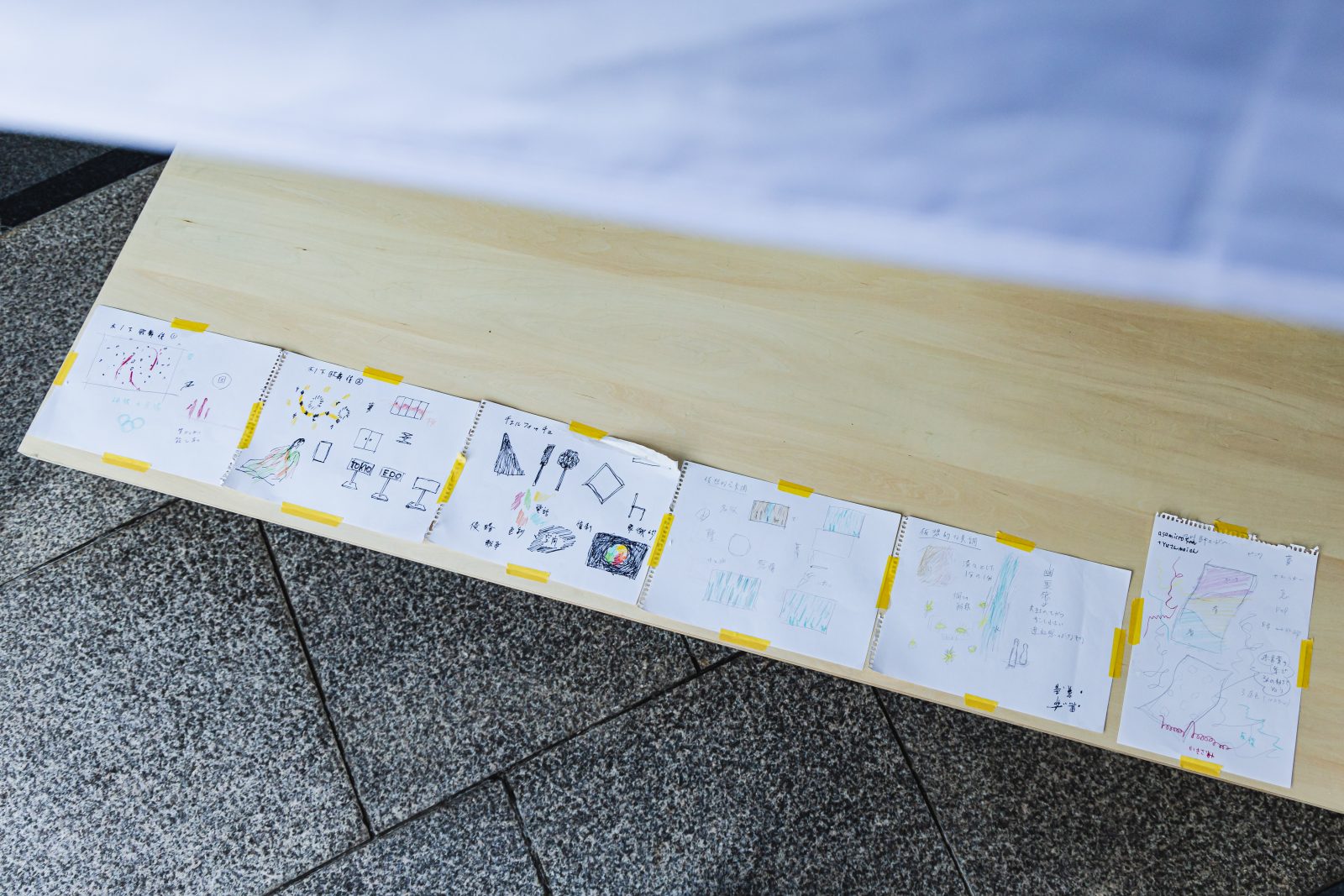
While making public works, visitors would sometimes ask with interest, “What are you making? Sometimes this naturally led to discussions about art festivals and performances. Ms. Yamamoto said he was happy that people were interested in his work.
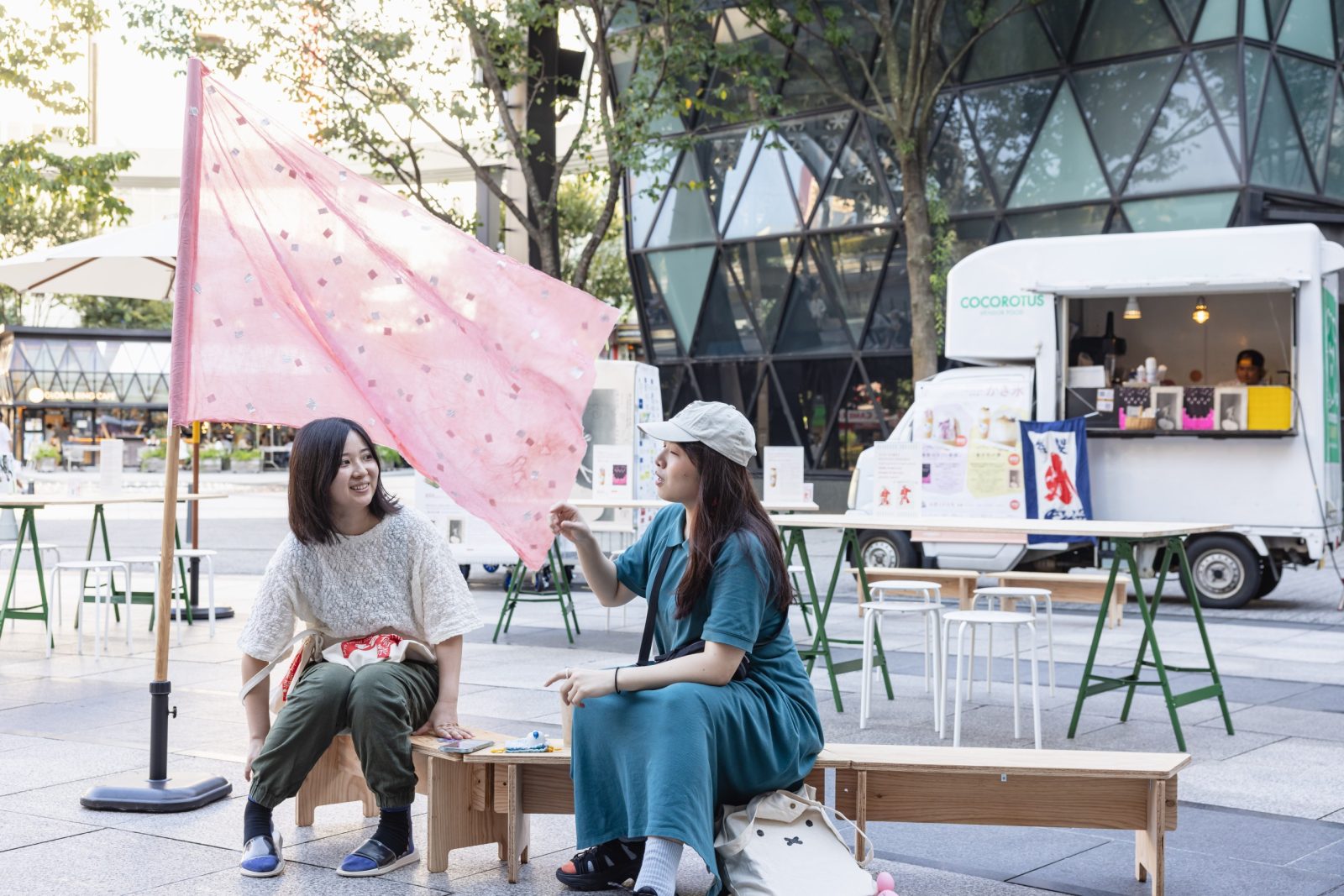
Dance Performance
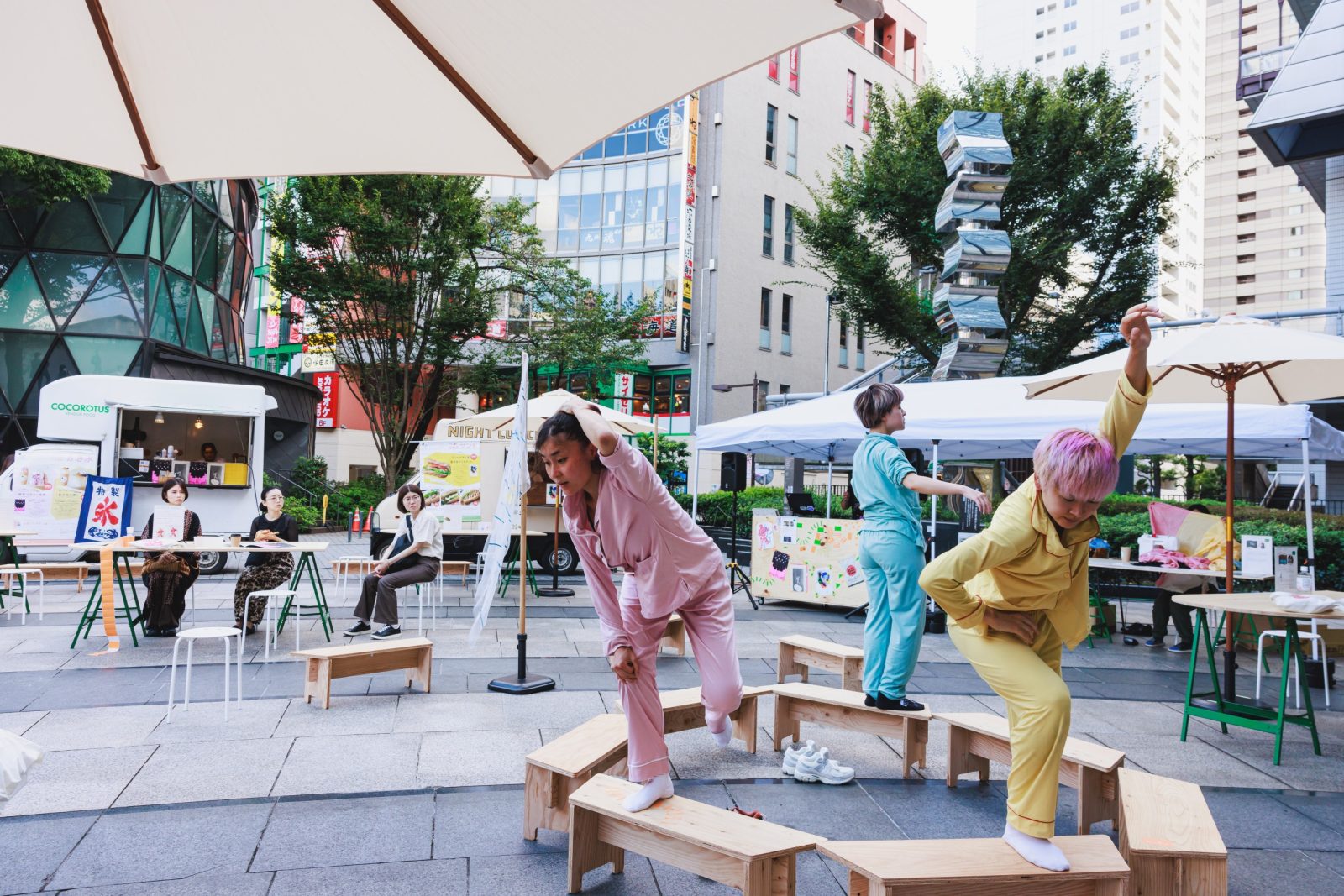
Dancer asamicro, along with fellow dancers Mei Yamanaka and Yui Kitagawa (Momonga Complex), viewed the Art Festival program and presented a piece inspired by it. They performed four public creations and performances.
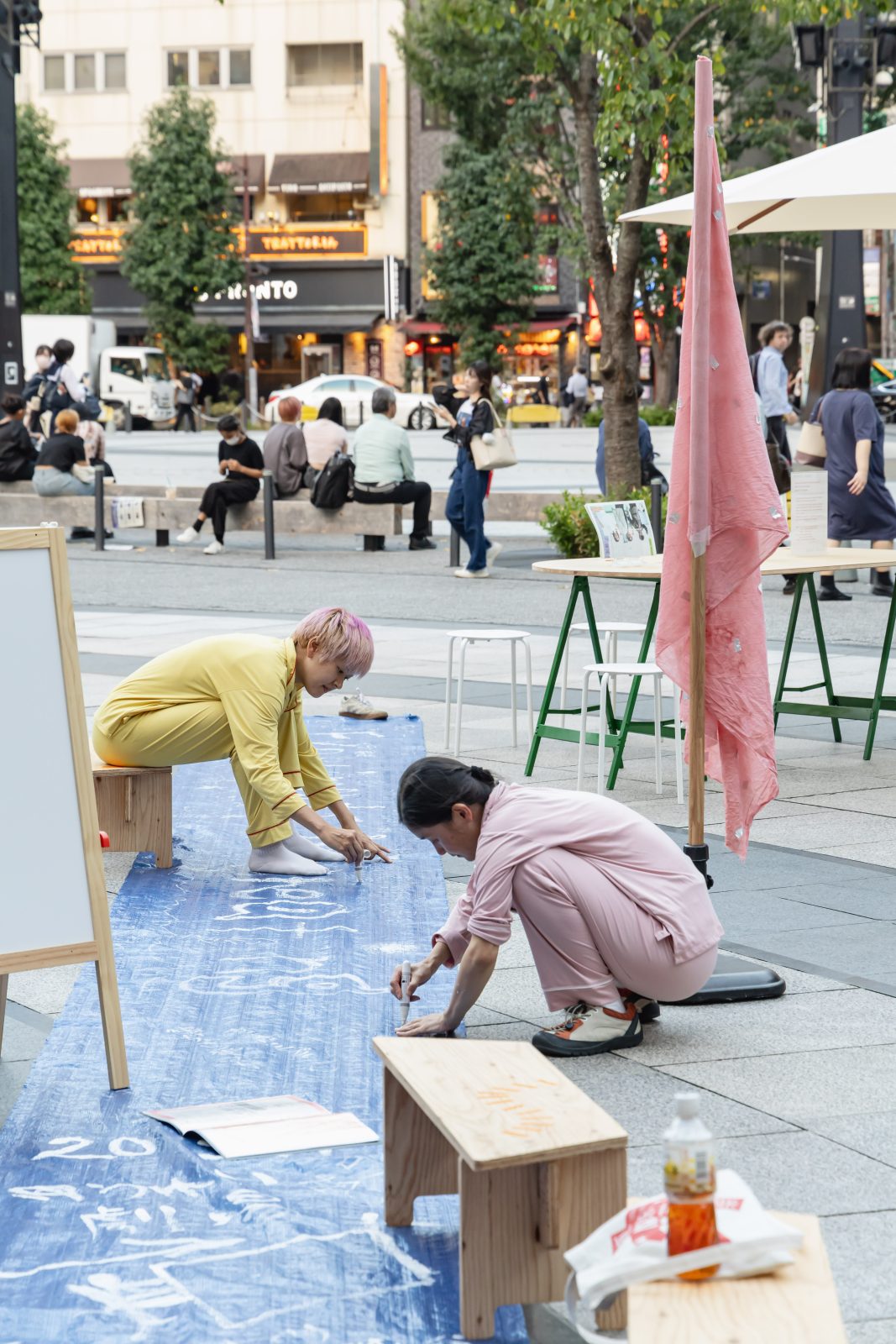
During the performance, asamicro and his team also collaborated with other artists.
Artists collaborated with each other, such as using artist Yamamoto's artwork for the performance and changing the speed of the dance performance from Tommo's improvised music.
The performances were staged a little differently each time: at one point they appeared from an escalator inside the theater, at another time they danced in a place in front of the theater where they could be seen by people in Ikebukuro Nishiguchi Park, and at a time when visitors were passing by after the show ended.
This was a result of asamicro's background in street dance and her experience dancing in public places.
Whether you have been to the theater before or not, there was something to make you want to stop and take a closer look at the performance.
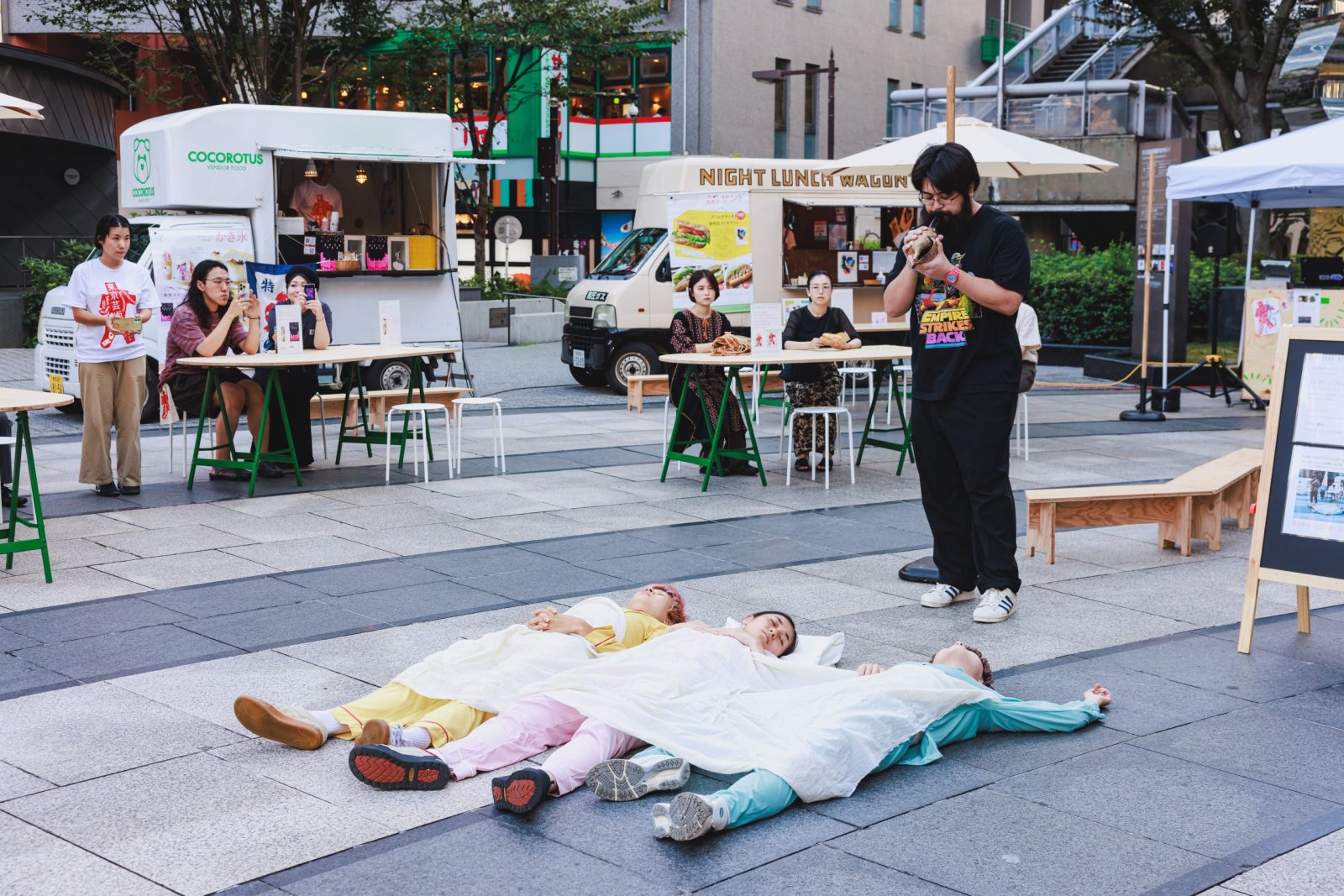
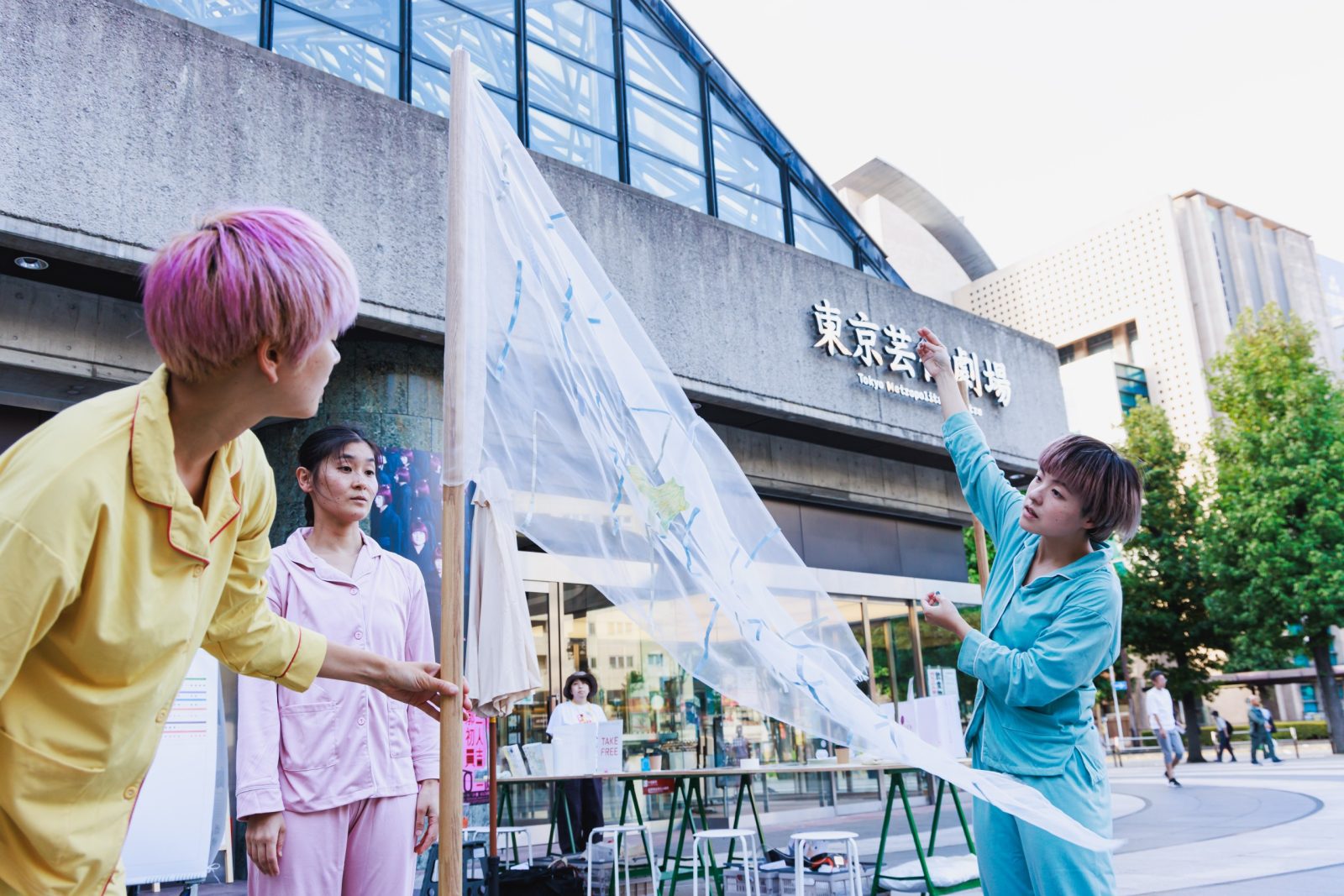
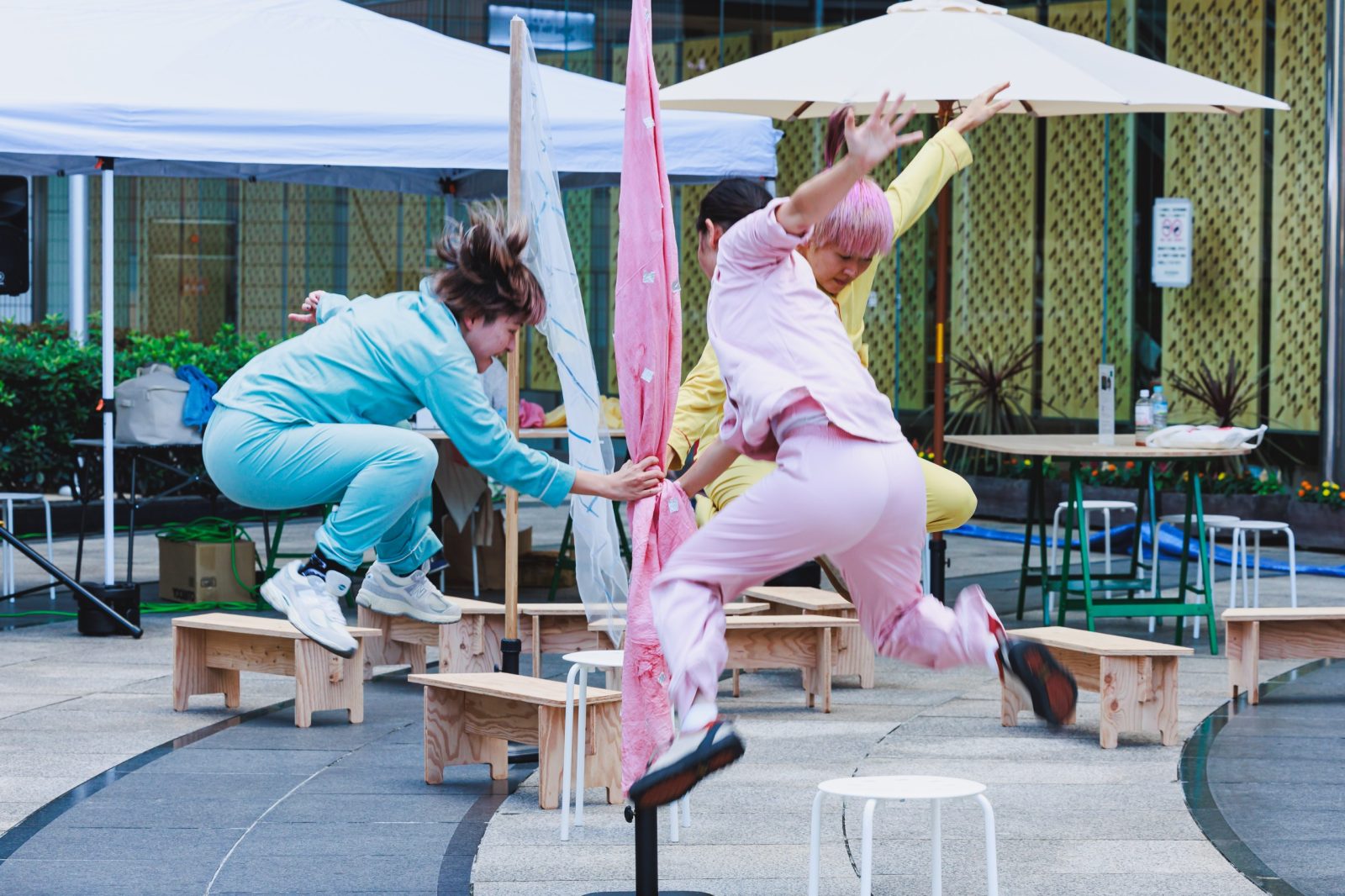
On the evening of September 28, asamicro's solo performance was also held in a fantastic atmosphere where it rained and lights reflected in the puddles.
Sharing thoughts and feelings after the theatre Discussion about “Virtual disorder” by the group “NORUHA”.
Furthermore, in the kitchen, an attempt was made to hold a review session on NORUHA "Virtual Disorder.''
It became a place where the theatergoers, Tokyo Festival staff, and the members of NORUHA expressed their feelings and thoughts little by little after watching the theater.
The impression session was held four times overall, and three times in the kitchen.
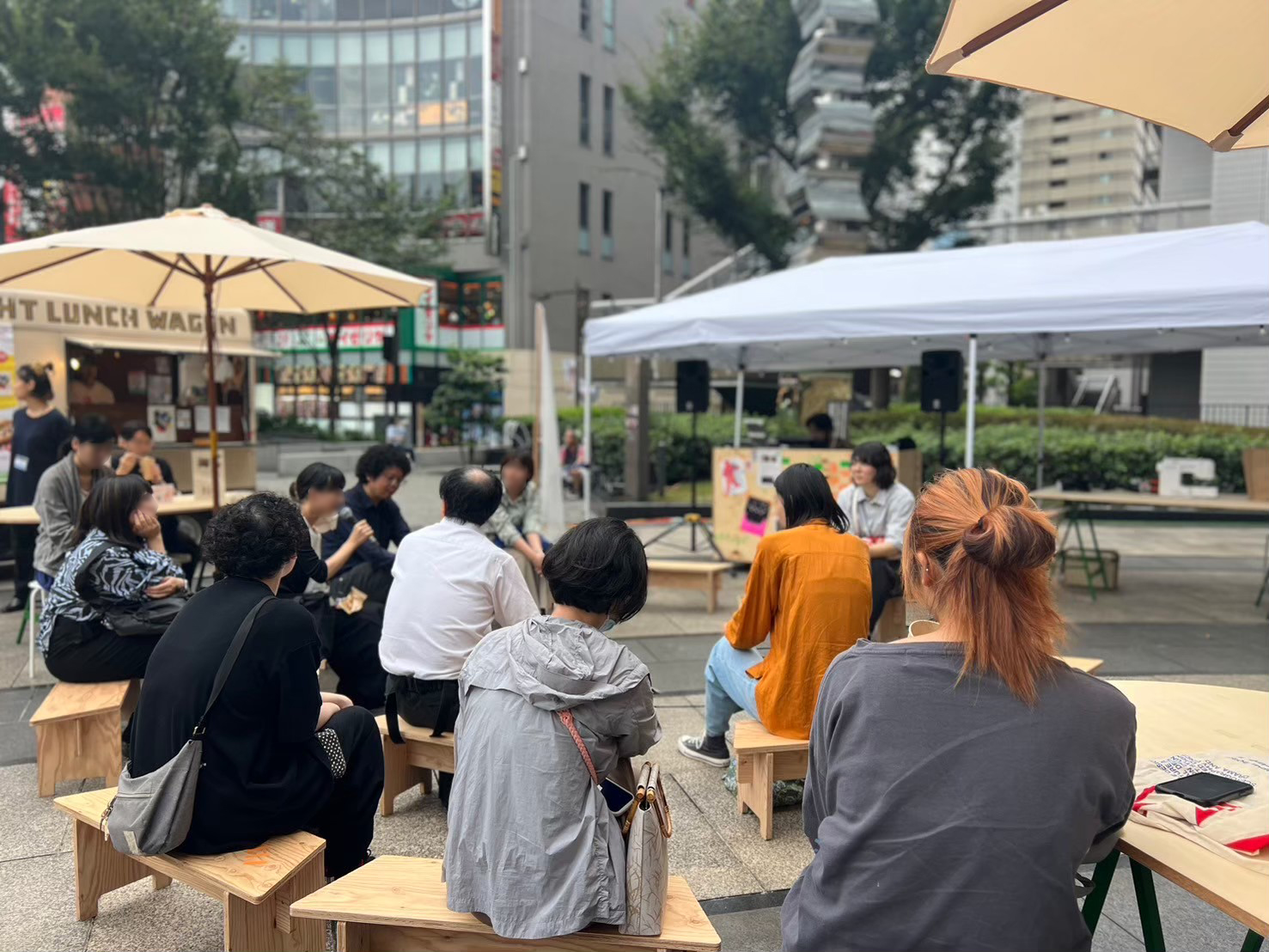
Impressions after holding the event by planner
Tokyo Festival Public Relations Officer Satsuki Imai, who planned the Transit Kitchen, looks back on the implementation of the kitchen as follows.
”This time, we made our first attempt at providing an outdoor information center at the Tokyo Festival.
However, in addition to serving as an information center, we wanted to expand it by collaboration—food, public creation, performance, music, etc. .
Therefore, we wanted to try to make a gateway for them who are unfamiliar with the Tokyo Festival to the stage of the theatre in various ways.
During the event, many visitors could be seen having fun in various ways, such as eating collaborative food, dancing to music, appreciating works, interacting with artists, and watching performances.
Tommo's friend came and played a DJ, a nearby student who happened to stop by came to dance, and a person from overseas who was sitting and chatting nearby came to visit the kitchen. I think we were able to create an organic space where something happens every day, with people from overseas who came to see the theater interacting with the performers.
I would be happy if as many people as possible enjoyed it and the existence of the Tokyo Festival spread further.
I planned this space, but it was everyone involved in the kitchen, including the kitchen members, visitors, and people involved with the art festival, who made this space organic.
I think it was a kitchen that grew day by day through the involvement of many people.”

During the Kitchen, we had many conversations with theatergoers, locals, visitors to Ikebukuro, tourists, and many more people than can be recorded in this report.
It wasn't just an experience of watching a play at the theater, it was also something you could think about and enjoy before and after the show.
I felt that the kitchen has become a place where people can come into close contact with expression, between the world of everyday life and the world of theater.
I hope this Transit Kitchen has led to your interest in the Tokyo Festival, theater, and culture.
【Event overview】
Schedule:Thursday, Sep. 19 – Sunday, Sep. 29, 2024 *Tuesday, Sep. 24, Wednesday, Sep. 25 : Close 11:30 a.m. – 07:30 p.m. (JST)
Venue:Tokyo Metropolitan Theatre(Front entrance of the theatre)
Language:Japanese/English/Easy Japanese
Ticket:free





